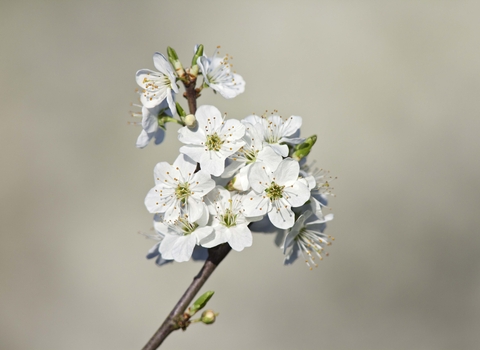
©Ross Hoddinott/2020VISION

©Guy Edwardes/2020VISION
Blackthorn
A familiar shrub of hedgerows and woodland edges, blackthorn comes alive in spring when it bursts into a froth of white blossom. It is well known for its sloes, too - the blue-black fruits used in sloe gin.
Scientific name
Prunus spinosaWhen to see
January to December.Species information
Category
Statistics
Height: 6-7mCommon.
About
Blackthorn is a thorny shrub of hedgerows and woodland edges. It bursts into life in March and April when masses of white flowers appear. During the autumn and winter, deep purple fruits (known as 'sloes') ripen on its branches. Blackthorn is an important species for all kinds of wildlife, but is especially vital for the rare Black Hairstreak butterfly who lays its eggs in its hedges. Here, they overwinter and the caterpillars emerge in spring ready to feed on the plant.How to identify
A spiny shrub, blackthorn has small, oval leaves that are finely toothed, and five-petalled, white flowers that appear in dense clusters. Its fruits are blue-black and round. It can be distinguished from the similar wild plum or bullace by its smaller fruit and narrower leaves.Distribution
Widespread.Did you know?
Sloes from blackthorn are collected in the autumn and early winter to make sloe gin, a favourite alcoholic drink in many parts of the country.The Wildlife Trusts work closely with farmers and landowners to ensure that our wildlife is protected and to promote wildlife-friendly practices. By working together, we can create Living Landscapes: networks of habitats stretching across town and country that allow wildlife to move about freely and people to enjoy the benefits of nature.
